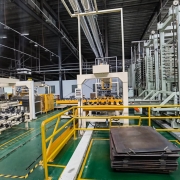How to Choose the Correct Stencil That Suits Your SMT Requirement
How to Choose the Correct Stencil That Suits Your SMT Requirement
If you are planning to make a stencil for a Surface Mount Technology project, then you should be familiar with some factors that can help you decide on the stencil that you need. These factors are price, shape, and dimension. Taking these factors into account will help you make the best choice.
Dimensions
A stencil has to have the correct dimensions to accommodate the board data on it. This is called the effective area. This is the central portion of the stencil that can be cut to fit the pads on the SMT board. The remaining space around the stencil is called the stencil margin. The stencil cannot be cut beyond this area.
There are five major types of SMT stencil technologies. These include laser-cut, electroformed, chemically-etched, and hybrid. Chemically-etched metal stencils are very useful for step stencils. These stencils are chemically milled on both sides, and the result is an almost straight wall with a slight hourglass shape at the center.
Texture
There are many options available for you when it comes to stencils. You can purchase stencils or DIY them on your own. A stencil is a design that has been cut out using a plotter. The quality and size of the stencil will depend on the settings of the plotter. Make sure the force and speed settings are correct before cutting a stencil. The force should be sufficient enough to cut through the vinyl without damaging the sticky backing. The speed should be fast enough to get the stencil out as quickly as possible. However, cutting too quickly can tear the corners of the rectangles.
The stencils used in surface mount technology are usually made from stainless steel foil. They are cut using a laser to fit the surface-mounted device. These stencils are positioned on the board and are used to apply solder paste. The stencil allows for accurate placement of the solder paste without the need for manual labor. In addition, a stencil saves time and effort.
Price
When buying stencils, the customer must take care to find one that is suitable for his/her requirement. There are two major factors to consider: stencil thickness and board data. The stencil thickness will help in releasing the paste from the board. Moreover, the stencil size must be within the Effective Area (EA), which is the central portion of the stencil. The rest of the stencil is called the margin, which cannot be cut.
The size of the stencil is an important parameter for any automatic solder paste printer. Different PCBs have different internal sizes, and the stencil has to accommodate the frame size of the printer.
Availability
Stencils are an excellent option for a variety of decorating projects. Whether you’re painting a room or adding a unique design to a piece of furniture, stencils can provide a clean, crisp image. Unlike a paintbrush, stencils are reusable and will last for years.

